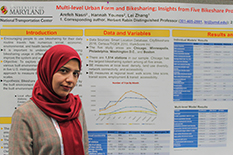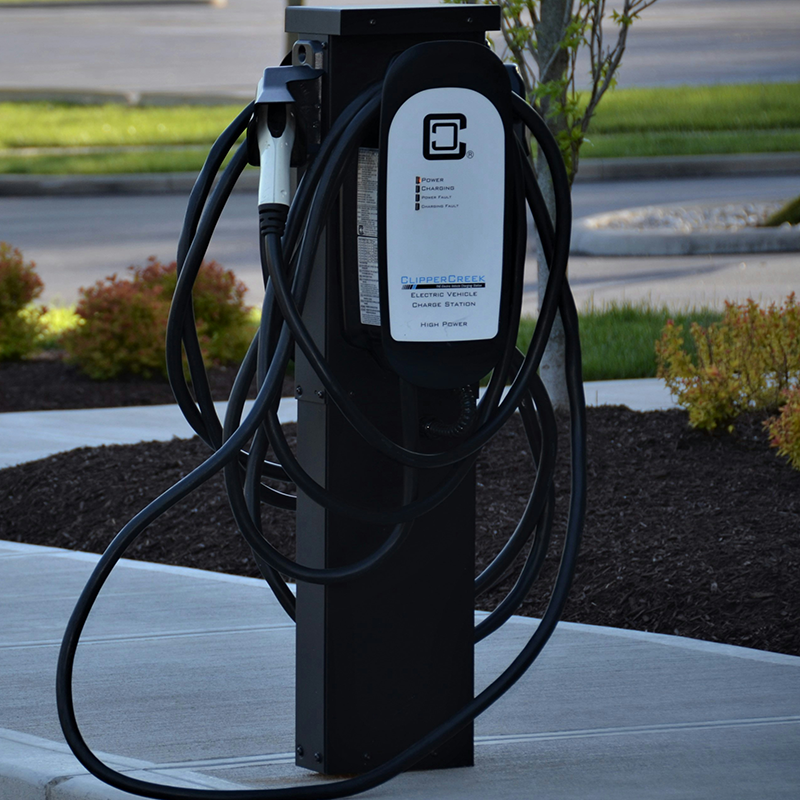News Story
NTC@Maryland Sponsored Seminar Series: Dr. Samer H. Hamdar

Dr. Samer Hani Hamdar, Assistant Professor at the George Washington University
Dr. Samer H. Hamdar, who works with Department of Civil and Environmental Engineering, The George Washington University gave a seminar to faculty and graduate students of UMD. The topic is "From Roadway Networks to Social Networks: Safety-Oriented Driver Behavioral Modeling and Evacuation Traveler Departure Time Choice". Transportation Safety is a complex topic in nature as it requires the understanding of several research areas at different scales which in turn demands a multidisciplinary research approach. In 2000, the monetary cost related to traffic accidents reached 230.6 billion U. S. Dollars (USD) in the U.S. only. Such cost is not solely associated with lost lives, injuries and damaged vehicles. It is also associated with the congestion implications of accidents and the corresponding lost travel time. Focusing on the safety of roadway networks, research interests looking at drivers’ behaviors during every-day commute conditions (i.e. driver behavior and crash formation) and travelers’ behaviors during extreme conditions (evacuation demand modeling and management) have increased over the years.
At the microscopic level, driver behavior may be analyzed using an episode-based hybrid traffic model. The driving process is seen as a continuous story divided into multiple episodes. This continuous story is characterized by a probability of terminating a given episode based on the driving experience encountered. Within each episode, an operational utility-based mode of driving can be specified. Such modelling framework allows producing different safety related parameters that are linked to travel time reliability and fuel consumption/Green House Gas (GHG) emission.
On the other hand, transportation safety during extreme events is better understood through looking at the macroscopic network level. Analysing travelers’ behaviour and the impact of social networks on departure time decisions is essential to efficient evacuation strategies. Given the role of society in perceiving a given risk, a utility function that accounts for both the traveler’s characteristics and his/her role in a given society is developed. This utility dynamically determines each individual’s binary decision to evacuate or not to evacuate at every time step.
Samer Hani Hamdar is an assistant professor at the George Washington University (GWU) where he is the director of the Traffic and Networks Research Laboratory (TNRL). Dr. Hamdar is an affiliate faculty member at the GWU Center for Intelligent System Research (CISR) and the National Crash Analysis Center (NCAC). He holds a BE Degree from the American University of Beirut, a MS Degree from the University of Maryland, College Park and a PhD Degree from the Northwestern University – all in Civil and Environmental Engineering. Dr. Hamdar worked on different projects covering different transportation areas. These projects include two recent National Science Foundation (NSF) Projects titled “Collaborative Research: New Methods for Measuring, Evaluating and Predicting the Safety Impact of Road Infrastructure Systems on Driver Behavior; and “CAREER: Collision Prediction and Vehicle Control Using an Episode-Based Modeling Framework”. His primary research interests include Driver Behavior Modeling, Traffic Flow Theory, Intelligent Transportation Systems, Pedestrian Behavior Modeling, Transportation Safety, Evacuation Modeling and Disaster Management. He has an international research background having participated in projects in Germany, Saudi Arabia and the USA. He is a member of the Transportation Research Board (TRB) Traffic Flow Theory and Characteristics Committee (AHB45) and the Task Force on Emergency Evacuations (ANB80T).
Published July 1, 2014











